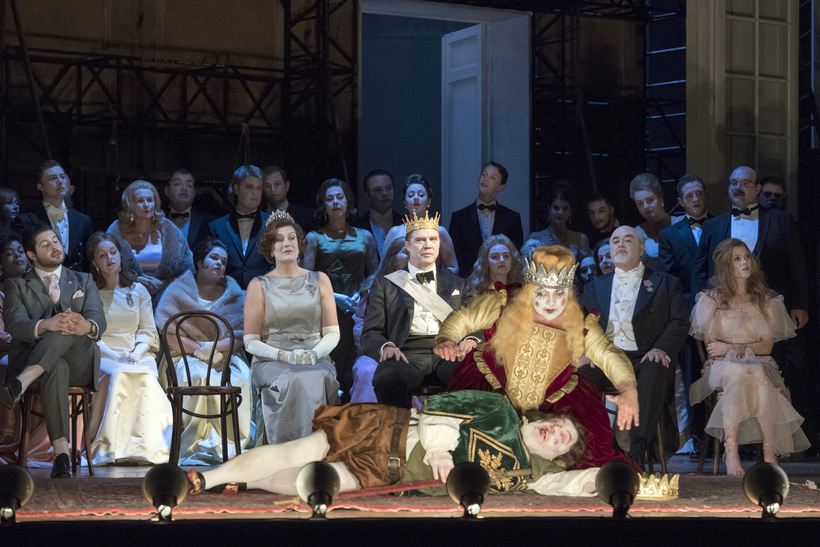Operas are written to be lived with. Aficionados know this, which is why they hate to settle for hearing a score of substance just once. These days, Brett Dean’s Hamlet is staking its claim as such a score.
Since its unveiling at Glyndebourne in the summer of 2017, Dean’s version of the Danish tragedy has toured the U.K. and chalked up premieres in Adelaide and Cologne. Next year, it’s Munich’s turn. Through June 9, a transfer of Neil Armstrong’s Glyndebourne production is playing at the Metropolitan Opera, with much of the original cast intact. What better moment to catch up with the live video from Glyndebourne, perhaps even as prep for the June 4 Met: Live in HD transmission at your local cineplex?
Now 60 and the winner of the prestigious Grawemeyer Award for his viola concerto The Lost Art of Letter Writing, Dean was not exactly discovering America when he chose Hamlet for his second opera. Some 40 composers planted their flags there before, only Ambroise Thomas, of France, with any lasting success.
Unlike their predecessors, though, Dean and his librettist Matthew Joycelyn have taken their text directly from Shakespeare—taken it, shredded it, tossed an estimated 80 percent, and assembled the leftover confetti into a jumble of overlapping episodes, assigning lines with little apparent rhyme or reason. Cubism meets drama! Do you know a hawk from a handsaw? (It helps to know your Hamlet backwards, forwards, and upside down.)

As a soundscape painter, Dean spares his champions no expense. Apart from a large orchestra with massive percussion reinforcements, his score calls for electronics, a piano, an onstage accordion, extra choristers in the pit, plus a pair of trios consisting of clarinet, trumpet, and percussion stationed in the auditorium. They conjure no end of darkling atmosphere—often crushing, sometimes gossamer, occasionally rip-roaring, seldom melodic.
The vocal writing comes in many varieties, often in extreme ranges, spun out in singsong phrases that dart and skitter. Wozzeck comes to mind; so, more insistently, does Benjamin Britten.
As evidenced in the Glyndebourne video, many of the most vivid moments fall to supporting players. The basso Ghost of Old Hamlet (John Tomlinson), who doubles as the Player King and the First Gravedigger, booms like Fafner, Wagner’s giant-turned-dragon of the “Ring” cycle. The dueling countertenors Rosencrantz and Guildenstern (Aryeh Nussbaum Cohen, Christopher Lowrey) add up to one twit in two bodies, injecting welcome scherzo sparkle. For heart, the baritone role of Hamlet’s confidant Horatio (Jacques Imbrailo) wins best in show hands-down.

Scruffy, hyperactive, and virtually entirely bereft of the melancholy Dane’s soul-searching monologues, the tenor Allan Clayton turns in a boffo performance if not a moving one. As Ophelia, the incandescent daredevil soprano Barbara Hannigan starts at 100 on the bonkers meter and escalates from there.
The opaque character of Gertrude seems to have left Dean at a loss; the mezzo-soprano Sarah Connolly pours on what emotion she can. As Claudius, her second husband and the murderer of her first, the baritone Rod Gilfry gets to deliver a Shakespearean monologue pretty much intact, punctuated with stuttered notes known in the business as Monteverdi (or goat) trills.
In the pale, chalky makeup worn by the entire cast, Gilfry evokes a prettier Richard Milhous Nixon, a kingpin made to order for the production’s antiseptic, formalist, mid-20th-century Western Kabuki.
The original Glyndebourne edition of Brett Dean’s Hamlet is available for streaming on demand on medici.tv. The current New York transfer premieres in movie theaters on The Met: Live in HD on June 6.)
Matthew Gurewitsch writes about opera and classical music for AIR MAIL. He lives in Hawaii

